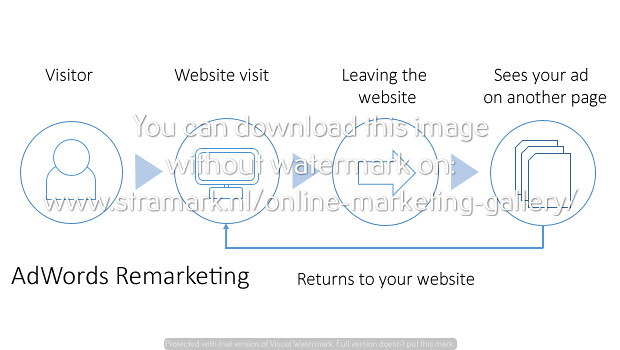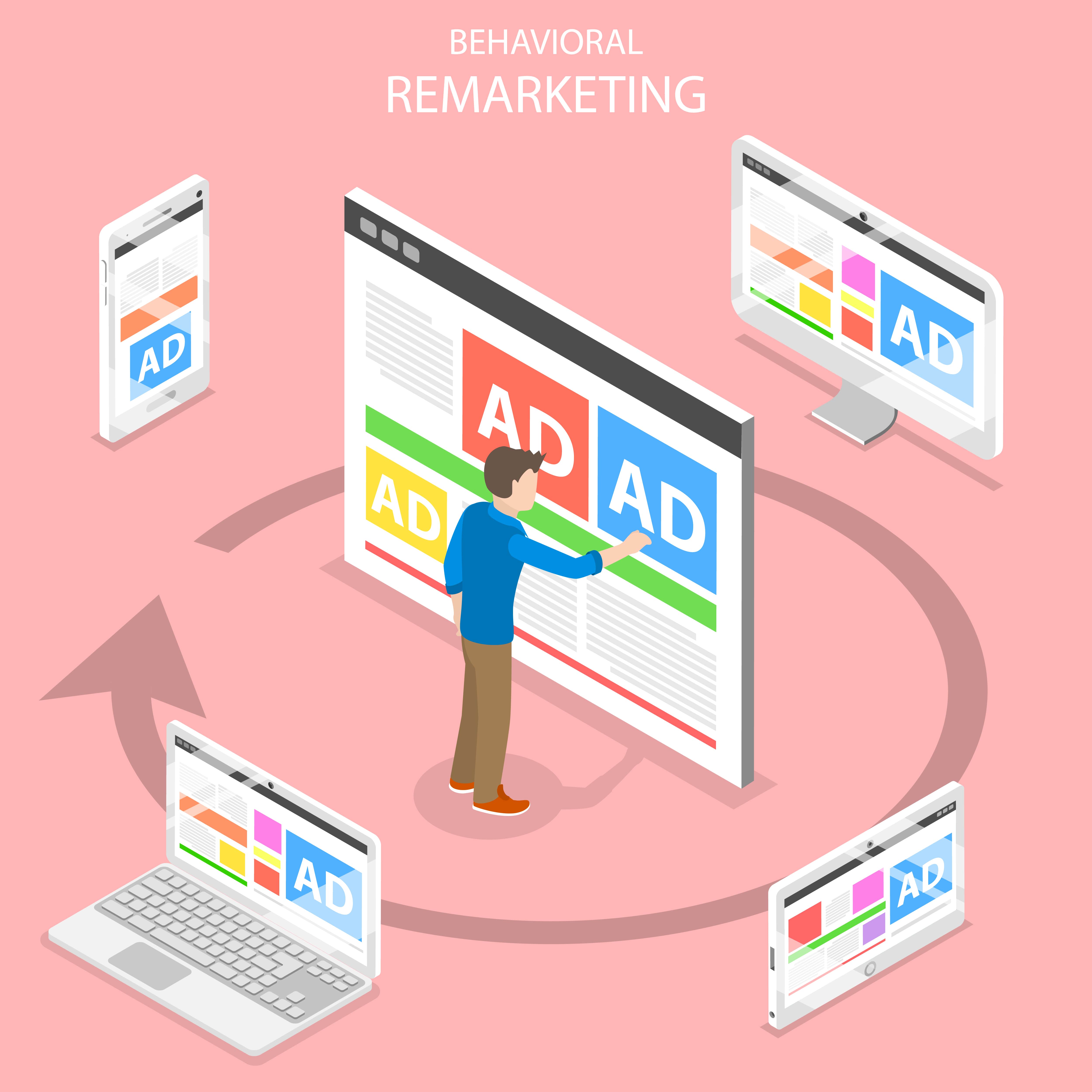Out in the vast digital landscape, where thousands of businesses and brands seek attention, a fascinating battle of tactics is constantly unfolding. It’s a captivating dance between marketers and consumers, filled with strategic moves and counter-maneuvers. One of the most powerful strategies employed by savvy advertisers is the art of “remarketing and retargeting.” In this article, we delve into the inner workings of these complex yet incredibly effective techniques, exploring how they drive engagement, market share, and ultimately, the success of businesses in this ever-evolving digital realm. Prepare to be intrigued and enlightened as we unlock the secrets of remarketing and retargeting strategies – the dynamic forces shaping today’s advertising landscape!
Table of Contents
- 1. The Power of Remarketing and Retargeting: Unlocking New Levels of Customer Engagement
- 2. Understanding the Differences: Remarketing vs. Retargeting and their Unique Benefits
- 3. Crafting a Targeted Approach: Strategic Segmentation for Effective Remarketing Campaigns
- 4. Optimizing Ad Creatives: Designing Irresistible Remarketing and Retargeting Content
- 5. Building Customer Loyalty: Leveraging Remarketing and Retargeting for Repeat Business
- 6. Tracking and Analyzing: Key Metrics to Measure Success in Remarketing and Retargeting
- 7. Tailoring Campaigns for Success: Top Recommendations for Effective Remarketing and Retargeting Strategies
- 8. Staying Ahead of the Game: Emerging Trends and Innovations in Remarketing and Retargeting Tactics
- Q&A
- To Conclude
1. The Power of Remarketing and Retargeting: Unlocking New Levels of Customer Engagement

Remarketing and retargeting are two powerful strategies that have revolutionized customer engagement in the digital era. With the ability to reach out to potential customers who have already shown interest in your products or services, these techniques can unlock new levels of engagement and significantly boost conversion rates. By understanding the nuances of these strategies and applying them effectively, businesses can maximize their marketing efforts and increase their chances of success.
One of the key benefits of remarketing and retargeting is the ability to personalize the customer journey. By tracking users’ behavior on your website or other online platforms, you can create tailored experiences that appeal to their specific needs and interests. This personalization can be achieved through targeted ads, customized email campaigns, or even personalized product recommendations. By delivering relevant content to users who have already demonstrated interest, you can increase their engagement and foster a stronger connection with your brand.
Another advantage of remarketing and retargeting is the opportunity to optimize your marketing budget. Instead of casting a wide net and hoping to capture new customers, these techniques allow you to focus your efforts on a well-defined audience. By specifically targeting users who have already shown interest in your offerings, you can save resources and maximize the impact of your marketing campaigns. Additionally, as remarketing and retargeting often have higher conversion rates than traditional advertising methods, you can achieve a higher return on investment (ROI) and drive more meaningful results for your business.
2. Understanding the Differences: Remarketing vs. Retargeting and their Unique Benefits

Remarketing and Retargeting Strategies
When it comes to digital marketing, remarketing and retargeting are two strategies that are often used interchangeably. However, it is important to understand the differences between the two and their unique benefits.
Remarketing refers to the practice of re-engaging with users who have previously interacted with your brand. By utilizing cookies and other tracking technologies, you can reach out to these past visitors and remind them of your products or services. Remarketing is a powerful tool that allows you to target a specific audience that has already shown some level of interest in your brand, increasing the likelihood of conversion.
Retargeting, on the other hand, involves targeting users based on their behavior and actions on your website. By tracking their browsing history and actions, you can tailor your ads to match their interests and preferences. Retargeting focuses on reaching out to individuals who may have shown interest in a specific product or service, but haven’t made a purchase yet. By reminding them of the benefits and value of your offering, retargeting helps to nudge them towards completing a conversion.
3. Crafting a Targeted Approach: Strategic Segmentation for Effective Remarketing Campaigns

Crafting a targeted approach is crucial for running effective remarketing campaigns. By strategically segmenting your audience, you can focus your efforts on those who are most likely to convert, maximizing the impact of your retargeting strategies. Here are some techniques to help you refine your remarketing efforts and boost your conversion rates.
1. Analyze User Behavior: A key aspect of strategic segmentation is understanding how users interact with your website. By analyzing their behavior, such as the pages they visit, products they view, or their abandoned carts, you can create meaningful segments. Identify common patterns and group users accordingly, allowing you to tailor your remarketing ads to their specific interests and needs.
2. Demographic Segmentation: Demographics play a crucial role in strategic segmentation. Consider factors such as age, gender, location, and income levels to create targeted audience segments. For example, if you sell luxury skincare products, targeting high-income individuals in specific locations can yield better results. By customizing your messaging and offers to cater to each demographic, you increase the chances of attracting their attention and driving conversions.
3. Customized Ad Content: Personalized content is key to capturing your audience’s attention and driving engagement. Create compelling ad copies with a clear call-to-action that resonates with each segment. Highlight the benefits or unique selling points that are most relevant to each group. Utilize dynamic remarketing ads to showcase the exact products or services that users have shown interest in, enhancing their personalized experience and increasing the likelihood of conversion.
In conclusion, strategic segmentation is a powerful tool for crafting effective remarketing campaigns. By analyzing user behavior, leveraging demographic data, and providing customized ad content, you can tailor your approach to reach the right audience at the right time. Empower your retargeting strategies and maximize your conversion rates by adopting these techniques, ensuring your remarketing efforts yield the desired results.
4. Optimizing Ad Creatives: Designing Irresistible Remarketing and Retargeting Content

In today’s competitive digital landscape, remarketing and retargeting have become essential strategies for boosting conversions and driving sales. However, it’s not enough to simply run ads targeting your previous website visitors or app users. To truly optimize your ad creatives and make them irresistible, you need to design content that stands out from the crowd. In this post, we will explore some effective techniques to create compelling remarketing and retargeting content that will captivate your audience and maximize your ROI.
When it comes to designing irresistible remarketing and retargeting content, visuals play a crucial role. Compelling imagery can grab your audience’s attention and make them stop scrolling. Invest in high-quality images or create eye-catching graphics that align with your brand’s aesthetics. Use bold colors, striking visuals, and visually appealing layouts to make your ads visually stunning. Remember, the goal is to create a memorable visual experience that entices your audience to take action.
In addition to captivating visuals, crafting persuasive ad copy is equally important. Your ad copy should be concise, impactful, and focused on the value your product or service offers. Use compelling headlines and persuasive language to pique your audience’s curiosity. Highlight the benefits of your offering and clearly communicate how it solves their pain points. Creating a sense of urgency or exclusivity can also be effective in driving conversions. Bold claims, customer testimonials, and social proof can help build credibility and trust with your audience.
5. Building Customer Loyalty: Leveraging Remarketing and Retargeting for Repeat Business

In today’s highly competitive online marketplace, building customer loyalty is critical for businesses to thrive. One effective strategy to achieve this goal is by leveraging the power of remarketing and retargeting. Remarketing involves reaching out to potential customers who have previously interacted with your brand, while retargeting focuses on re-engaging individuals who have shown interest in specific products or services. By implementing these strategies, businesses can maximize their chances of repeat business and ultimately increase their customer loyalty.
With remarketing, businesses can re-establish a connection with potential customers who have already demonstrated some level of interest in their products or services. By placing a cookie on their devices, you can track their online behavior and tailor your marketing efforts accordingly. For instance, if a user visited your website without making a purchase, you can showcase personalized ads to them as they browse other websites or social media platforms. This serves as a subtle reminder of your brand and encourages them to revisit your website, potentially leading to repeat business.
On the other hand, retargeting focuses on targeting individuals who have shown interest in specific products or services. By monitoring their actions on your website, such as viewing a particular item without making a purchase, you can strategically retarget them with customized ads. For example, if a user added an item to their cart but didn’t complete the purchase, you can create a retargeting campaign that reminds them of the product and offers incentives like discounts or free shipping. This personalized approach increases the chances of conversion and influences the decision-making process, fostering customer loyalty.
In conclusion, remarketing and retargeting strategies are powerful tools that businesses can utilize to build strong customer loyalty. By reaching out to potential customers who have already shown interest in your brand or specific products, you can tailor your marketing efforts to suit their preferences and increase the likelihood of repeat business. Implementing these strategies allows you to stay top-of-mind with your audience, foster engagement, and ultimately, build lasting customer relationships.
6. Tracking and Analyzing: Key Metrics to Measure Success in Remarketing and Retargeting

When it comes to remarketing and retargeting strategies, tracking and analyzing key metrics is crucial for measuring success. These metrics provide valuable insights into the effectiveness of your campaigns and allow you to make data-driven decisions to optimize your efforts.
One of the key metrics to consider is conversion rate. This metric tells you the percentage of users who were successfully converted into customers after being exposed to your remarketing or retargeting ads. By monitoring this metric, you can identify which ads or campaigns are driving the highest conversion rates and allocate your budget accordingly.
Another important metric to track is click-through rate (CTR). This metric measures the percentage of users who click on your ads after seeing them. A high CTR indicates that your ads are engaging and relevant to your target audience. By continuously monitoring and optimizing your CTR, you can improve your ad copy, creative, and targeting to drive more clicks and ultimately increase conversions.
7. Tailoring Campaigns for Success: Top Recommendations for Effective Remarketing and Retargeting Strategies

Effective remarketing and retargeting strategies are essential for maximizing the success of your campaigns. To ensure you are optimizing your efforts, here are the top recommendations to tailor your campaigns for success:
Diversify Your Targeting: Don’t limit yourself to just one platform or approach when targeting your audience. Utilize a mix of display advertising, email marketing, and social media channels to reach potential customers at different touchpoints. This will help increase brand visibility and keep your business at the forefront of their minds.
Create Personalized Messaging: One size does not fit all when it comes to remarketing and retargeting. Tailor your message to your audience. Use dynamic content and personalized recommendations based on their previous interactions with your website or products. By showing your customers that you understand their needs and interests, you’ll significantly increase the chances of conversion.
Optimize Ad Frequency: It’s important to strike a balance between staying top-of-mind and overwhelming your audience. Monitor your ad frequency to prevent ad fatigue without missing opportunities for engagement. Segment your audience based on their behavior, interests, and stage in the buyer’s journey to deliver ads at the right time and avoid bombarding them.
8. Staying Ahead of the Game: Emerging Trends and Innovations in Remarketing and Retargeting Tactics

As the digital landscape continues to evolve, remarketing and retargeting strategies have become essential for businesses aiming to stay ahead in the competitive game. These tactics have proven to be powerful tools in reaching potential customers who have already shown interest in a brand or its products. To effectively leverage these techniques, it is crucial to keep an eye on emerging trends and innovations in the field.
One emerging trend in remarketing and retargeting is the use of personalized messaging. By tailoring advertisements and communications to individual users based on their previous interactions with a brand, businesses can create a more personalized and relevant experience. This approach not only increases the chances of conversion but also helps to build a stronger brand-customer relationship. Moreover, with the advancements in artificial intelligence and machine learning, marketers can now analyze extensive data sets to gain deeper insights into customer behavior and preferences, allowing for even more targeted messaging.
Another exciting innovation in the realm of remarketing and retargeting is the integration of social media platforms. With billions of active users across various social media networks, these platforms offer an immense opportunity for businesses to reach their target audience with precision. By incorporating tools such as Facebook Pixel and Twitter Website Tag, brands can track user behavior on their websites and deliver relevant ads to those users directly on their social media feeds. This integration not only extends the reach of remarketing campaigns but also enables businesses to engage with potential customers on platforms where they spend a significant amount of their time.
Q&A
Q: What is the difference between remarketing and retargeting?
A: While both strategies aim to reach out to potential customers who have shown interest in a product or service, the main difference lies in where these efforts take place. Remarketing typically refers to efforts within an email marketing context, where customers who have abandoned a purchase or shown interest in a product are targeted with personalized emails. On the other hand, retargeting usually takes place within the realm of online advertising, where users are shown relevant ads based on their previous browsing behavior.
Q: Why should businesses consider implementing remarketing and retargeting strategies?
A: Remarketing and retargeting can be highly effective tactics for businesses aiming to nurture leads, increase conversions, and ultimately drive revenue. By specifically targeting customers who have already shown an interest, these strategies help to keep your brand top of mind and encourage users to return and complete their purchase. This not only maximizes the potential of your marketing budget but also enhances customer loyalty and satisfaction.
Q: How can remarketing and retargeting strategies be effectively executed?
A: Successful execution of these strategies requires careful planning and implementation. With remarketing, businesses should focus on crafting personalized and compelling email content that addresses the specific needs and concerns of their target audience. Utilizing data segmentation and behavior tracking, you can send tailored messages and exclusive offers to re-engage potential customers.
On the retargeting front, it is crucial to employ pixel tracking technology to identify users who have shown interest in your website or specific products. By displaying relevant ads across the web, you remind users of their initial interest and encourage them to return. Striking a balance between frequency and relevancy is key, as you want to stay persistent without becoming intrusive.
Q: Are there any potential drawbacks or risks associated with these strategies?
A: While remarketing and retargeting can yield significant benefits for businesses, it’s important to be mindful of potential drawbacks. One risk is the possibility of customers feeling targeted or overwhelmed by ads following them across the internet. This may result in a negative perception of the brand and can lead to an unfavorable customer experience. Clear and concise ad frequency caps and ensuring ads are relevant and personalized can help mitigate this risk.
Additionally, with the increasing emphasis on data privacy, it’s important to comply with relevant regulations and ensure the ethical and responsible use of customer data. Being transparent about your data collection practices and giving users the ability to opt-out can help maintain trust and protect your brand reputation.
Q: How can businesses measure the success of remarketing and retargeting strategies?
A: To assess the effectiveness of these strategies, businesses can track a range of metrics. In remarketing, email open rates, click-through rates, and conversion rates can provide insights into campaign performance. By comparing these metrics against industry benchmarks and analyzing conversion rates, businesses can gauge the success of their remarketing efforts.
For retargeting, metrics such as impressions, click-through rates, cost per click, and conversion rates can provide valuable insights. Analyzing the customer journey from ad exposure to conversion can help identify areas for optimization and assess the return on investment.
Q: Can remarketing and retargeting strategies be used across different industries?
A: Absolutely! Remarketing and retargeting strategies can be leveraged by businesses across various industries. From e-commerce and SaaS companies to service providers and even non-profit organizations, these strategies can be tailored to suit specific business goals and target audience characteristics. By understanding your customers’ behaviors and preferences, you can effectively implement remarketing and retargeting to drive results, regardless of your industry.
Future Outlook
In conclusion, the power of remarketing and retargeting strategies cannot be underestimated in today’s competitive digital landscape. With every click, every scroll, and every search, we leave behind a treasure trove of data, waiting to be tapped into. And it is through the ingenious application of remarketing and retargeting techniques that businesses can seize the opportunity to reignite the spark with their audience, delivering a personalized and enticing journey that leads to conversion.
By strategically honing in on consumer behavior and intent, remarketing allows businesses to effortlessly tailor their messages and offers to suit individual needs and preferences. With each touchpoint, they reinforce their brand’s presence, reminding customers of the value they bring and rekindling their desire to engage and purchase.
Retargeting, on the other hand, takes the concept a step further, extending the invitation to potential customers who have already shown interest or even abandoned their journey mid-way. It offers a second chance, an opportunity to recapture their attention and guide them towards making a purchase decision. By staying top-of-mind, retargeting empowers businesses to reshape their narrative, reestablish trust, and instill confidence in hesitant buyers.
But let us not forget, in this intricate dance of data and strategy, the importance of privacy and trust. Consumers are becoming increasingly conscious of their digital footprint, demanding transparency and accountability from brands. Therefore, it is vital for businesses to handle customer information ethically and responsibly, building trust that will ultimately pave the way for fruitful remarketing and retargeting endeavors.
As the digital landscape continues to evolve, so do the possibilities and potential of remarketing and retargeting strategies. Advancements in technology, such as artificial intelligence and machine learning, hold the promise of even more precise targeting and personalized experiences. The future of remarketing and retargeting is a captivating tapestry of innovation and creativity.
So, dear reader, armed with the knowledge of these powerful techniques, it is time for businesses to harness their potential and unlock new dimensions of customer engagement. Embrace the art of remarketing and retargeting, and watch as your brand reaches new heights, capturing hearts, minds, and wallets in the ever-expanding digital wilderness.

